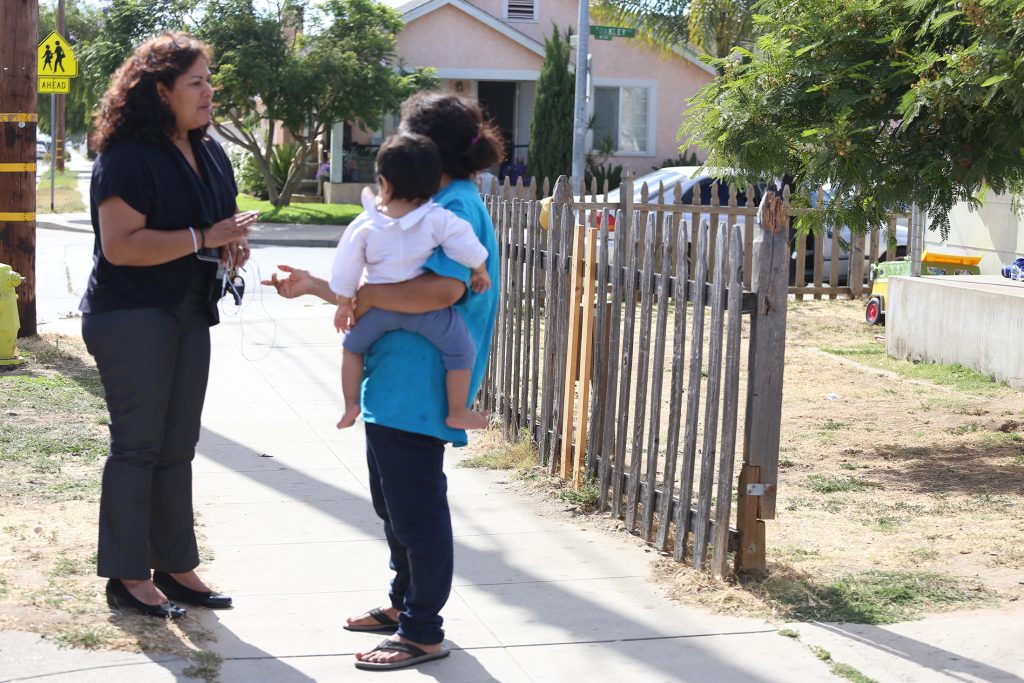
Black teachers: How to recruit them and make them stay

Lessons in higher education: What California can learn

Keeping California public university options open

Superintendents: Well-paid and walking away

The debt to degree connection

College in prison: How earning a degree can lead to a new life

As California’s housing shortage intensifies, the number of homeless children is expected to climb. Since 2014, the number of homeless youth in California has jumped 20 percent, to more than 202,329, and accounts for nearly 4 percent of the overall public school population. Homeless children are enrolled in nearly every district in the state, according to the California Homeless Youth Project. An EdSource special project explored the issue in detail, and includes a map showing the number of homeless students in California schools.
The McKinney-Vento Homeless Assistance Act is a federal law, passed in 1987 and re-authorized in 2015, that guarantees certain rights for homeless children, regardless of whether they’re homeless for a week or years. The law requires schools and districts to provide homeless youth “equal access to the same free, appropriate public education, including a public preschool education, as provided to other children and youths.”
The law means that homeless children do not have to re-register at a different school every time they move, and districts must provide transportation to school regardless of where a homeless child is living. For example, if a child is living in a shelter in San Francisco but attending school in San Jose, the San Jose district must provide transportation to school every day.
Some districts do more than what’s required by law, by providing free backpacks, school supplies and hygiene items; keeping schools open late so students have a quiet, safe place to study; hiring social workers to help families find housing and navigate services; contracting with food banks and other nonprofits so families have access to the necessities and providing extra tutoring and academic counseling to homeless students.
The law defines homelessness as living:
Schools are required to count their homeless students. Most schools give questionnaires to parents in the fall, asking about a student’s housing situation. Teachers, coaches, counselors and other school staff can also identify a student as homeless.
But some schools don’t distribute the surveys, and some parents are reluctant to answer the surveys truthfully out of fear the government will put their children in the custody of Child Protective Services. In addition, some students drift in and out of homelessness, and might not be homeless on the day of the survey.
As a result, homeless children are most certainly under-counted.
Some get grants through the California Department of Education, and state law allows schools to count the homeless in their unduplicated pupil counts for Title I funding. Other districts dip into their general funds if grants and Title I money aren’t enough.
Homeless children live in almost every city in California, but are clustered in urban and agricultural areas. Eighty-five percent are living “doubled up” with other families, 4 percent live in motels or hotels, almost 7 percent live in shelters and the rest are considered “unsheltered,” or living on the street. Most live with their parents, but some live on their own. A disproportionate number of unaccompanied youth are minorities or LGBTQ.
Homeless students say they’re often tired, stressed, embarrassed, hungry and have trouble concentrating on their schoolwork. They say it’s difficult to participate in extra-curricular activities or social events, so they sometimes feel isolated and alone. Homeless students are more likely than their peers to be chronically absent or not graduate from high school, according to the Department of education.
Here are a few resources for schools, parents and students:
The National Center for Homeless Education
California Department of Education homeless education program

The overreliance on undersupported part-time faculty in the nation’s community colleges dates back to the 1970s during the era of neoliberal reform — the defunding of public education and the beginning of the corporatization of higher education in the United States. Decades of research show that the systemic overreliance on part-time faculty correlates closely with declining rates of student success. Furthermore, when faculty are… read more

Panelists discussed dual admission as a solution for easing the longstanding challenges in California’s transfer system.

A grassroots campaign recalled two members of the Orange Unified School District in an election that cost more than half a million dollars.

Legislation that would remove one of the last tests teachers are required to take to earn a credential in California passed the Senate Education Committee.
Comments (1)
Comments Policy
We welcome your comments. All comments are moderated for civility, relevance and other considerations. Click here for EdSource's Comments Policy.
Faustina Santana 4 years ago4 years ago
If the McKinney Vento act is supposed to help to remove barriers for a student to get to school, then why was it that when I, the parent, asked for transportation support, I got denied? To make matters worse, I got charged with truancy. What happens then?